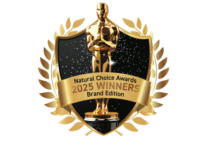Silver Spring, MD—The U.S. Food and Drug Administration (FDA) announced that it is revoking the authorization for the use of FD&C Red No. 3 (also known as Red Dye No. 3, Red Dye 3, and erythrosine), based on the Delaney Clause of the Federal Food, Drug, and Cosmetic Act (FD&C Act). By amending its color additive regulations, FD&C Red No. 3 will no longer be allowed to be used in food and ingested drugs.
Red Dye 3 is a synthetic food dye that gives foods and drinks a cherry-red color. According to FDA, it has been primarily used in food products such as candy, cakes/cupcakes, cookies, frozen desserts, and frostings and icings. It also is used in certain ingested drugs.
Prior to 1990, it was also used in cosmetics. According to Consumer Reports, "The FDA had already banned the use of Red Dye No. 3 in cosmetics in 1990 after evidence began to mount about its potential harms. But, for complicated bureaucratic reasons, the dye was still allowed in food, and the food industry continued to say it was safe to consume."
FDA's current action comes in response to a 2022 color additive petition that cited two studies showing cancer in lab male rats exposed to high levels of Red Dye 3. The Delaney Clause prohibits FDA authorization of a food additive or color additive if it has been found to cause cancer in humans or animals.
FDA said in its announcement that the way that FD&C Red No. 3 causes cancer in male rats does not occur in humans, adding, "Relevant exposure levels to FD&C Red No. 3 for humans are typically much lower than those that cause the effects shown in male rats. Studies in other animals and in humans did not show these effects; claims that the use of FD&C Red No. 3 in food and in ingested drugs puts people at risk are not supported by the available scientific information."
About the 2022 color additive petition
The Environmental Working Group shared the news of FDA's decision, which EWG said comes after years of advocacy from organizations led by EWG, the Center for Science in the Public Interest (CSPI), and a number of other public health groups and activists who petitioned the FDA to take action.
In addition to the cancer concerns, EWG points to a 2021 study by California’s Office of Environmental Health Hazard Assessment, which found synthetic dyes like Red Dye 3 are linked to a greater risk of behavioral difficulties in children, including decreased attention span and memory problems.
“Today’s action by the FDA marks a monumental victory for consumer health and safety,” said EWG President and co-Founder Ken Cook, in a press release. “For years, Red 3 remained in food products, despite growing evidence linking it to health problems, particularly in kids. This ban sends a strong message that protecting the health of Americans – especially vulnerable children – must always take priority over the narrow interests of the food industry.”
Dr. Josh Axe shared the news with his followers on social media, noting, "This red dye isn’t going to magically disappear today because of the ban. Make sure to continue checking ingredients lists on your food. Lastly, red no. 3 is just one of the dyes that needs to be banned. Yellow 5 & 6 and Blue 1 (among others), are the next ones we’ll be working towards banning."
Deadlines for manufacturers
Manufacturers who use FD&C Red No. 3 in food have until January 15, 2027 to reformulate their products. For ingested drugs, the deadline to reformulate is 18, 2028. Foods imported to the U.S. must comply with U.S. requirements.










